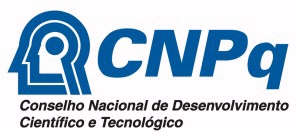| Telephone (country code) | email |
|
|
Robert DuBois, Missouri University of
Science and Technology [formerly UMR] (USA) |
(001)
573 341 4708 |
dubois@mst.edu |
|
Fred Schlachter, American Physical Society (USA) |
(001)
510 486 4892 |
fsschlachter@lbl.gov |
|
Eduardo Montenegro, Universidade Federal
do Rio de Janeiro (Brazil) |
(55)
21 2562 7272 |
montenegro@if.ufrj.br |
|
Arnaldo de Brito, Campinas, São
Paulo (Brazil) |
(55)
19 3512 1096 |
arnaldo@lnls.br |
|
Carmen Cisneros, Universidad Nacional
Autónoma de México (Mexico) |
(52)
555 622-7731 |
carmen@fis.unam.mx |
|
Geraldo Sigaud, PUC-Rio de Janeiro (Brasil) |
(55)
21 3114-1272 |
gms@vdg.fis.puc-rio.br |




|
Arnaldo de Brito |
Campinas,
São Paulo (Brazil) |
synchrotron
studies of molecules |
| Carmen
Cisneros |
Universidad
Nacional Autónoma de México (Mexico) |
photoionization
and collisions involving molecules |
| Carlos Della Védova |
Univ. Nacional de La Plata
(Argentina) |
multicoincidence spectroscopy
and chemical reactions probed by synchrotron radiation |
| David
Tománek |
Michigan
State University (USA) |
theory
of excited state dynamics in nanostructures |
|
Eduardo Montenegro |
Universidade
Federal do Rio de Janeiro (Brazil) |
using
electrons and ions to study molecules |
| Fred
Schlachter |
American
Physical Society (USA) |
Exploring
ultrasmall objects with an ultrabright photon beam: Buckyballs and other tiny items. |
| Geraldo Sigaud |
Pontifícia Universidade
Católica do Rio de Janeiro (Brazil)
|
|
| Jorge
Peón |
Universidad
Nacional Autonoma de México (Mexico) |
Ultrafast
Photophysics and Photochemistry of Molecules |
|
José d'Albuquerque e Castro |
Universidade
Federal do Rio de Janeiro (Brazil) |
magnetic
properties of nano-structured materials |
| Lew
Cocke |
Kansas
State University (USA) |
momentum
imaging (COLTRIMS) with intense laser pulses |
| Linda
Young |
Argonne
National Laboratory (USA) |
ultrafast
processes with x-rays |
| Lou
DiMauro |
Ohio
State University (USA) |
attosecond
lasers |
| Robert
DuBois |
Missouri
University of Science and Technology (USA) |
differential
studies and methods using femtoamp beams for studying fullerenes and nanotubes |
| Sylvio
Canuto |
University
of São Paulo (Brazil) |
spectroscopy
of molecules and nano-solids in solution. New challenges and perspectives |
| Antonio
Carlos Fontes dos Santos |
Universidade Federal do Rio de Janeiro (Brazil) |
| Ana
Lucia Ferreira de Barros |
Centro Federal de Educação Tecnológica Celso
Suckow da Fonseca (Brazil) |
| Marcelo
Martins Sant’Anna |
Universidade Federal do Rio de Janeiro (Brazil) |
| Nelson Velho de Castro
Faria |
Universidade Federal do Rio de Janeiro (Brazil) |
| Vitor
Luiz Bastos de Jesus |
Centro Federal de Eduacação Tecnológica
de Quimica de Nilópolis (Brazil) |
| Wania
Wolff |
Universidade Federal do Rio de Janeiro (Brazil) |
Arrival: It is anticipated that most attendees will arrive in Rio on Saturday, March 29, or Sunday, March 30. A chartered bus to Búzios will be arranged to leave early afternoon on Sunday, March 30. In order to facilitate this process, a single pickup point in Rio (Copacabana) is planned. We anticipate arriving in Búzios late afternoon which will allow plenty of time to check in, have an evening meal, and explore.
Departure: A bus returning to Rio de Janeiro will depart the Hotel Atlântico following lunch on Friday, April 11. For those wishing to return home that evening, it is anticipated that the bus will arrive in Rio around 6 p.m. and be at the airport (GIG) shortly thereafter.
a) The HOTEL ASTORIA PALACE, a four star hotel located in a nice location (Av. Atlântica, 1866 - Copacabana) on Copacabana beach and within walking distance of a Metro station. The hotel was recently refurnished and when we checked it out recently everything looked new and clean. At present, the prices quoted to us PER ROOM are R$200,00 for a standard double or single room (~US$120), R$250,00 for a standard triple OR for a LUXO SGL/DBL, and R$300,00 for a SUPER LUXO SGL/DBL. Take a look at Hotel Astoria Palace website.
b) The BANDEIRANTES HOTEL This is a more modest hotel located at Rua Barata Ribeiro, 548 - Copacabana Tel.:(55-21)2548-6252. Prices with breakfast and taxes included are: SGL: R$130,00; DBL: R$ 140,00; TPL: R$ 175,00. Take a look at Bandeirantes Hotel website. Note that there is a map on the website showing the hotel location.
If you wish to book a room in one of these hotels at these prices, please contact our travel agent directly by e-mail. Send your requests to Metatron Viagens e Turismo Ltda. / Rio de Janeiro Turismo e Eventos. (metatron@rioturismoeventos.com). NOTE that the credit card payment authorizations are to be in R$ (not US$) as the credit card company must make the conversion to US$ on the date they process the transaction. If you want to minimize costs, tell us to TRY to pair you up with someone else. Please note that the Hotel Astoria Palace will be the departure location for the bus to Búzios on Sunday afternoon, March 30.